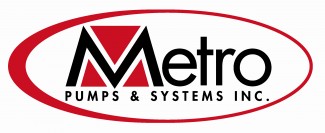
Blog
Vertical Turbine Pumps – Fear of the Unknown
Posted by: admin | Posted on: June 14th, 2012 | 0 Comments
The vertical turbine pump is one of the most reliable, efficient and versatile pumps on the market if applied and installed properly.
So why are so many engineers and designers reluctant to apply this type of equipment?
One reason could be because every pump is engineered for its particular application. Or because the bowl assembly  and a large percentage of the pump is installed below grade never to be seen again until it is time for maintenance. Another possibility is the installation can be as simple as drilling a well or as complicated as an engineered pump basin with everything in between. But, whatever the reason, the benefits typically outweigh these concerns and with knowledge and experience these concerns are generally alleviated.
and a large percentage of the pump is installed below grade never to be seen again until it is time for maintenance. Another possibility is the installation can be as simple as drilling a well or as complicated as an engineered pump basin with everything in between. But, whatever the reason, the benefits typically outweigh these concerns and with knowledge and experience these concerns are generally alleviated.
My first exposure to this equipment was in 1976 working for the Johnston Pump Co., at the time considered the leader in this type of pump equipment. Starting in the manufacturing and repair division, I had the opportunity to learn how the pumps were engineered, built, installed, constructed and troubleshot. This provided me with a great knowledge base and comfort level in all aspects of vertical turbine pumps.
The point is once you learn more about vertical turbine pump equipment you will have a better understanding on how to apply these pumps and take advantage of their versatility and high efficiencies.
We will be bringing you a series of articles in upcoming issues of Pump Talk which will address the selection, installation and maintenance of this type of equipment.
In general, vertical turbine pumps offer many benefits over other types of pumps and are designed for a wide range of flow capacities and liquid types. They are also capable of producing some of the widest pressure ranges of all pumps. The impellers are commonly used in multiples called stages. These multi-stage pumps are each specially designed to produce the desired gallons per minute and pressure required. Low net positive suction head (NPSH) required first-stage impellers are also an option to improve performance for high vapor pressure fluids or any low NPSH available suction condition.
ADVANTAGES
- Very adaptable – can be made in virtually any materials to any length and for any combination of flow and head
- Efficiencies typically in the high 70% to high 80% range
- Can be built to accommodate any low NPSH available condition
- Hydraulics can be modified to accommodate future changes in flow or head by adding stages, modifying impeller curvature or changing bowl assemblies
- Positive motor alignment with registered motor fit
- Pump head can be engineered to withstand all seismic loads, ultra-low vibration standards and to avoid reed critical frequencies in variable speed applications
- Fabricated heads can be made to match existing dimensions
- Inline installation
- Elevated motor for flood protection
- Sealing flexibility
- Requires no priming
- Small footprint
DISADVANTAGES
- Initial installation may be more costly depending on required depth and sump arrangement
Vertical turbine pumps are a very important piece of modern infrastructure. They are used in every industry. Here are a few places where they can be found:
APPLICATIONS
- Airport fueling
- Cooling towers
- Intake pumps
- Low NPSH
- Pipeline
- Pipeline booster
- Barge/ship offloading
- Bilge pumps
- Circulating pumps
- Condensate
- Waste water
- Open sumps
- Fire pumps
- Well pumps
- Irrigation
- Pumping from oceans, rivers or ponds
- Offshore platforms
- Snow making
- Tank transfer
- Tank stripping
Vertical turbine pumps by all standards are very durable, outlasting many other product types and are easily repairable by experienced personnel. Stay tuned for the next edition of Pump Talk covering the selection of vertical turbine pumps.
HAVE AN APPLICATION?
Send your request in TODAY to sales@metropumps.com for immediate attention!
—
Additional Reading: Vertical Turbine, Mixed Flow & Propeller Pumps
By: John L. Dicmas
Published By: McGraw Hill




